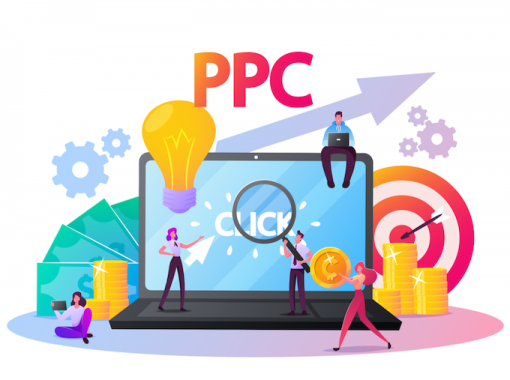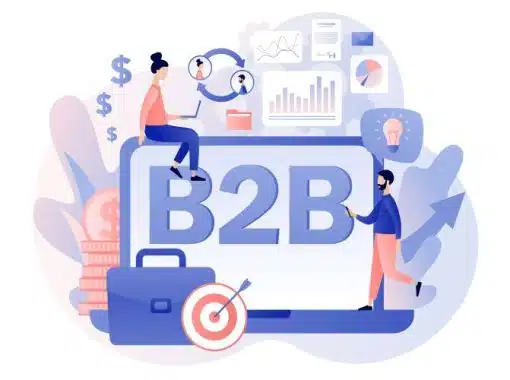
Have you ever had a parent or grandparent tell you, “Just drop off your resume, they’ll hire you!” We know this advice doesn’t work in today’s competitive job market.
This same concept applies to digital marketing. Long gone are the days of organically posting on social media and garnering thousands of likes and views. No longer can you launch a website and rely on organic traffic from SEO alone.
The online landscape is just too competitive for these tactics to be viable anymore.
To generate brand awareness, drive revenue, and grow your company online, you need to participate in paid advertising campaigns. But, understanding paid advertising strategies is easier said than done.
In this quick guide, we’ll show you:
- What paid advertising platforms are available to businesses
- The key phrases, metrics, and tactics you need to know before paying a dime
- How to get started with paid advertising
Let’s dive in.
What is Paid Advertising?
Paid advertising is, at its core, exactly what it sounds like. Companies pay for an advertising spot on a particular platform.
As it relates to online marketing, paid advertising can also refer to Pay-Per-Click or PPC advertising. These strategies require brands to participate in “real-time auctions” by bidding for a particular placement, keyword, or advertising slot. This practice gets exemplified in search ads and social media ads.
Other forms of paid advertising can include paying for banner ads on a relevant news site or paying an influencer for a video about your product.
The 4 Top Paid Advertising Channels Today
There are plenty of paid advertising opportunities available to brands. However, not all of these channels are as lucrative as they may appear. Take advantage of the four top paid ad channels, including:
1. Social Media Ads
No matter if your target audience is Gen Z or Baby Boomers, you can reach them on social media. From legacy networks like Facebook to trending platforms like TikTok, nearly every social media channel offers paid advertising opportunities.
Among the top paid social media ad platforms are:
- Facebook and Instagram
- TikTok
- Snapchat
- YouTube
Each social media platform has its own advertising best practices and specifications. Keep in mind, what works on TikTok won’t necessarily work on Twitter and vice versa! Each social channel needs a dedicated ad strategy.
2. Search Ads
When you search for products and services on Google, ads appear at the top, bottom, and sometimes the side panels of the search listings. Companies pay for these placements with the bidding process described earlier.
If your business is in a competitive market or local area, having prime placement in search listings—paired with strong organic and local search placements—can be beneficial. But keep in mind, search ads can be expensive. Here’s a list of the most expensive keywords on Google Ads
While Google PPC ads are the obvious choice, don’t sleep on Bing Ads or DuckDuckGo, too. More people use these search engines than you may think!
3. Display Ads
Have you ever visited a website with banner ads? These ads get strategically placed throughout the site, and the context may or may not have to do with the website’s content.
These ads are another example of paid advertising options available to brands. Similar to search ads, display ads target users based on specific attributes such as:
- Search history
- Location
- Income level
- Purchase history
These ads can be imagery, text only, animated, or videos.
While this ad channel can provide a great return on investment, keep in mind that internet users are developing “banner blindness” in response to so many ads.
4. Retargeting Ads
Retargeting ads follow a user based on their previous interactions with other content, such as a search ad, social media post, or website visit.
If you’ve ever searched for a product one day and seen a social media ad for that exact model the next, that’s an example of retargeting ads in action.
Retargeting ads use cookies to track user activity and spotlight ads at the right time on the right sites. Many marketers will use retargeting ads in combination with other paid advertising channels.
Bonus Channel: Paid Content Discovery
Another paid advertising channel is known as paid content discovery. This option natively places your content, such as a blog post, on websites with larger subscriber or visitor counts. Platforms like Outbrain and Taboola make this distribution popular.
Because of the increase in banner blindness, some advertisers only use paid content discovery when necessary and not as a top channel.
A Quick Guide to Paid Advertising Terminology
Before diving into paid advertising strategies, you need to understand the terms, phrases, and metrics behind these tactics. Here’s a quick overview of everything you’ll need to know:
- Bid: The price you want to spend per click on keywords or placements you target with your paid advertising efforts.
- Cost-Per-Click (CPC): How much you will pay the bidding network or platform such as Facebook, Google, or Twitter for each click generated by the ad campaign.
- Cost-Per-Conversion (CPC): How much it costs your business on average to generate conversions from a paid ad campaign. Conversions can be measured as clicks, form submissions, purchases, and more.
- Cost-Per-Acquisition (CPA): The average cost of obtaining a customer from your paid advertising strategies.
- Conversion Rates: The percentage of users who interacted with your ads that converted into paying customers. Measure the conversion rate of each ad campaign, channel, and strategy for insight into your overall success.
- Click-Through Rate (CTR): The number of clicks compared to the number of impressions of a particular ad.
- Exact Match Keywords: Search platforms will only show your ads if the exact keyword or phrase was searched.
- Impressions: How many times an ad was shown to your designated audience.
- Return on Ad Spend (RoAS): The amount of money generated as sales compared to the total spent on paid advertising efforts. This metric is helpful when comparing different ad sets or campaigns.
When executing a paid advertising strategy, you’ll need to identify which metrics matter most in defining success for your brand.
For example, for products with larger price tags, the number of clicks may not matter as much as the total conversions and Return on Ad Spend.
How to Get Started with Paid Advertising Strategies
Although paid advertising strategies may seem complex, getting started requires only five steps.
1. Identify the Right Advertising Channels
No one said you had to advertise everywhere, right? Spreading your ad budget thin across multiple platforms isn’t a good use of funds either.
Start by identifying which paid advertising channels your audience interacts with most frequently. Or, determine which channels make the most sense for the end goal of your campaign.
If your audience tends to skew older, advertising on a young channel like TikTok won’t generate as many sales as you may like. And, if your product or service is one that customers typically need to think about before making a purchase decision, starting with search ads can be a beneficial route.
Don’t hastily choose a channel. Do your research.
2. Understand Channel Specifications
Each channel has defined ad specifications. And, these restrictions don’t translate from one platform to another.
Before starting on creative, make sure you fully understand the ad specifications of your intended platform. Otherwise, you’ll deal with endless headaches and roadblocks later on!
3. Develop a Winning Ad
After the strategy and distribution, the most critical part of your entire campaign is the ad itself.
Your ad needs to accomplish a defined goal. Throwing any old imagery and copy together and calling it a day won’t do the trick.
You’ll need to work with your marketing team to develop an ad that not only meets the channel’s criteria but also:
- Catches your audience’s attention
- Has a clear call-to-action
- Convinces them to click-through or complete a specific action
This is why it’s crucial to know exactly what you want your audience to do and what the end goal of your strategy is.
4. A/B Test Everything
It is extremely rare to knock it out of the park on your first paid advertising campaign. This is why advertisers relentlessly experiment with their campaigns and tactics.
A/B testing is the process of pairing two factors against each other and seeing which one derives the best results. Advertisers will test everything, including:
- Ad copy
- Headlines
- Ad imagery/media
- Ad placement
- Target keywords
- Audience segmentation
The goal of A/B testing is to ultimately identify which combination of criteria, media, and copy work the best to achieve the end goal.
5. Review and Adjust
Paid advertising is all about experimentation. This means you’ll need to continually review your strategy progress and adjust as necessary.
If you notice something isn’t driving results, make a change.
Spending too much on a particular ad channel? Change it.
Ad imagery not capturing the attention of the right audience? Fix it.
Specific keywords failing to generate clicks? Switch it.
It will take time, patience, and a lot of trial and error to discover what paid advertising strategies, channels, and creative work best for your intended goals.
Get Started With Paid Advertising
Another way to track the success of paid campaigns online is with a toll-free number. Attach this number to a particular advertising channel or individual ad, and you’ll know exactly how callers found your business.












